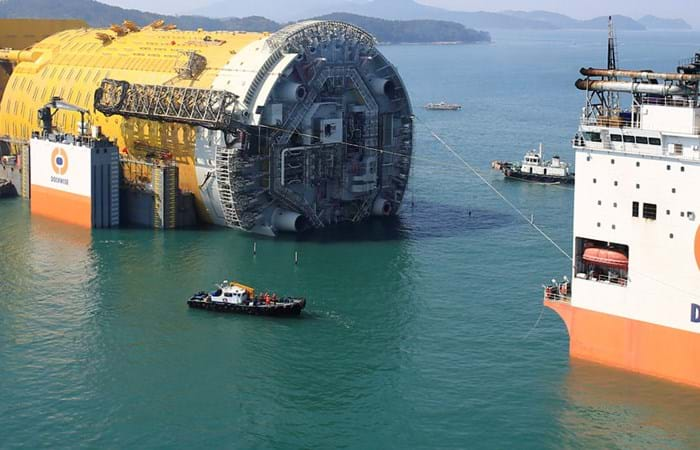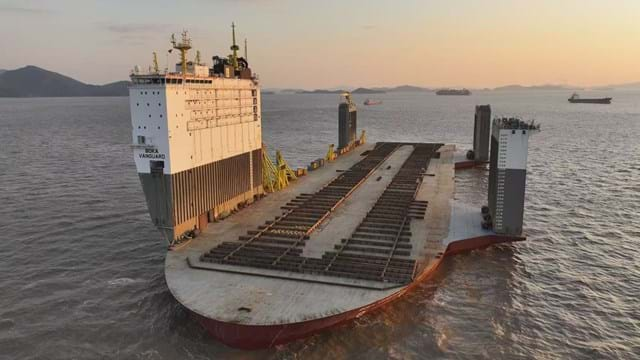For the Statoil Aasta Hansteen project, Dockwise has transported the newbuild spar hull from the HHI fabrication yard in Ulsan, South Korea to the offshore discharge location near Høylandsbygd, Norway. The spar is the world’s largest spar ever built to date.
On 26 April 2017, Statoil's huge Aasta Hansteen spar - the world's largest and Norway's first - set sail from Hyundai Heavy Industries shipyard, bound for Norway. The journey, aboard Boskalis' Dockwise Vanguard heavy transport vessel is about 14,500 NM long and will take about two months. Once in Norway, the spar hull will be floated off and later this year the 25,000-tonne topsides will be mated by means of a catamaran float-over. Following commissioning work, the spar will then be towed into the Norwegian Sea to be moored at the Aasta Hansteen field and is due onstream in 2018. Statoil’s Aasta Hansteen spar development will move Norwegian operations into a new deepwater environment. The spar will be moored in 1300m water depth in the Norwegian Sea – the deepest previous project is Shell’s Ormen Lange, at 900m. The Aasta Hansteen facility will be Norway’s first spar project (as well as being the world’s largest spar), the country’s first use of steel catenary risers (SCRs), the first synthetic rope mooring spread offshore Norway and the first use of mechanically lined pipe installed using reel-lay in the country.
Living quarters
For this project the Dockwise already loaded the Aasta Hansteen living quarters on board the semi-submersible vessel Swan in November 2015 and transported it to the Hyundai Heavy Industries construction yard where it was integrated with the new-build topsides.
Topsides installation
In the summer of 2017 the Aasta Hansteen topsides will be transported on board the Dockwise White Marlin from South Korea to Norway. Later this year the topsides will be installed by means of a dual-barge float-over by two Dockwise semi-submersible vessels.


